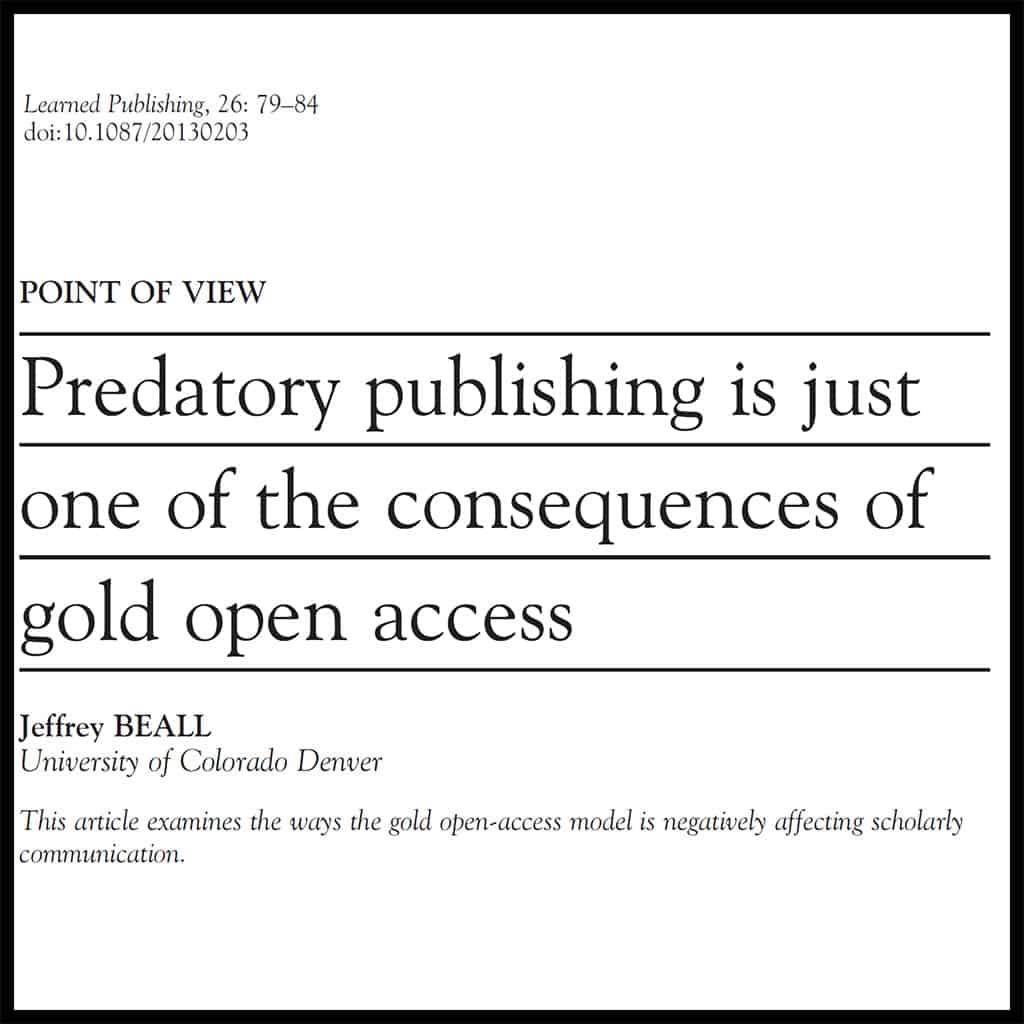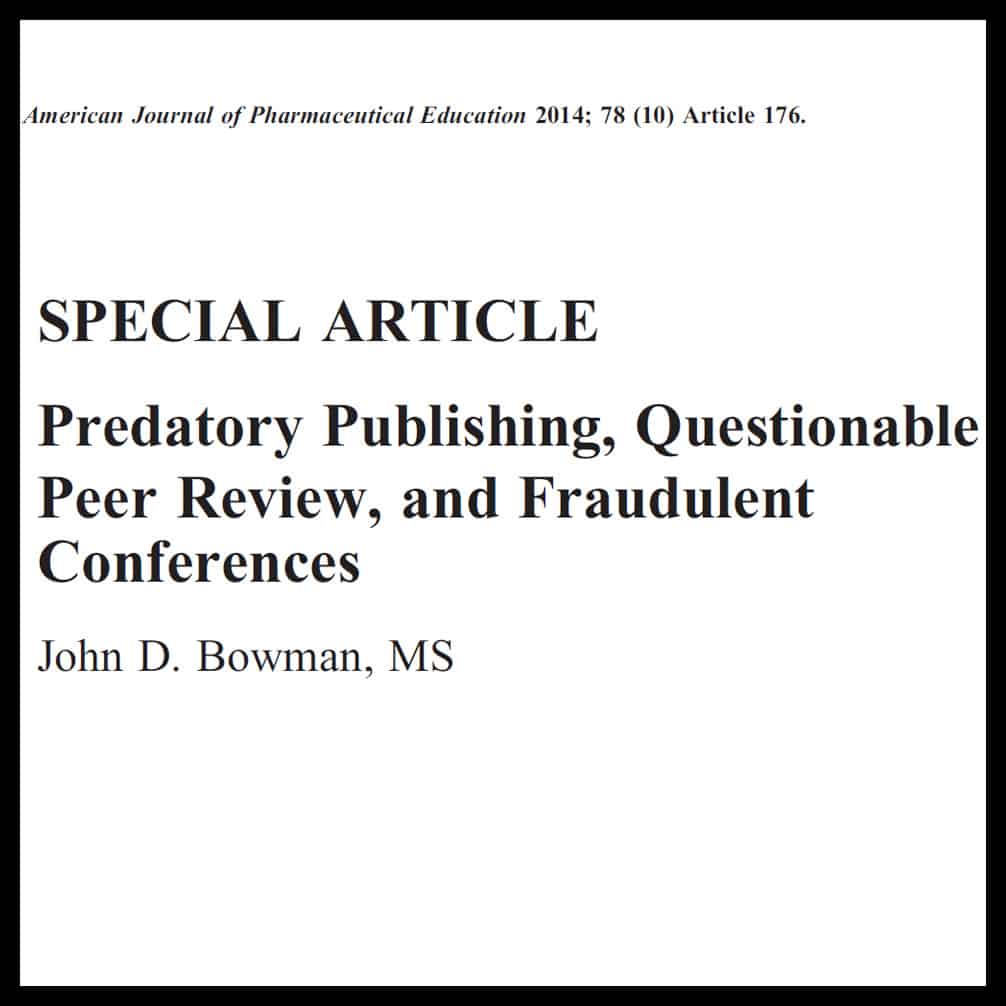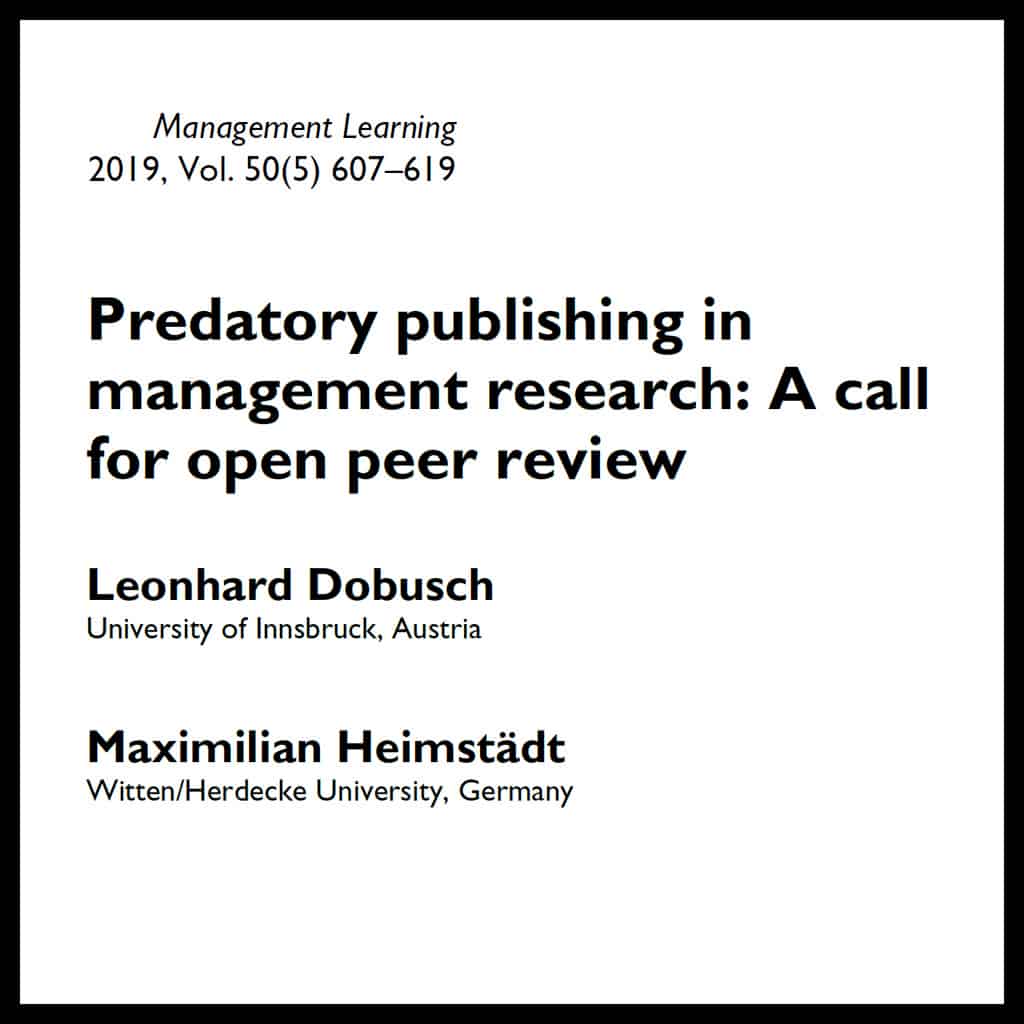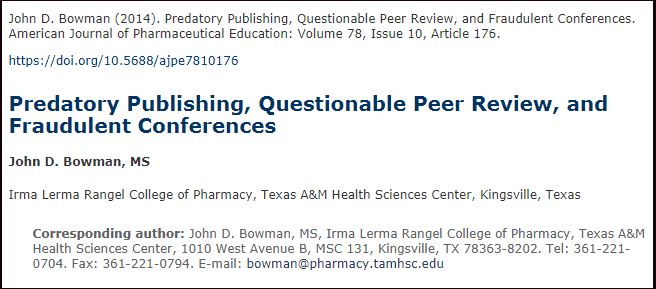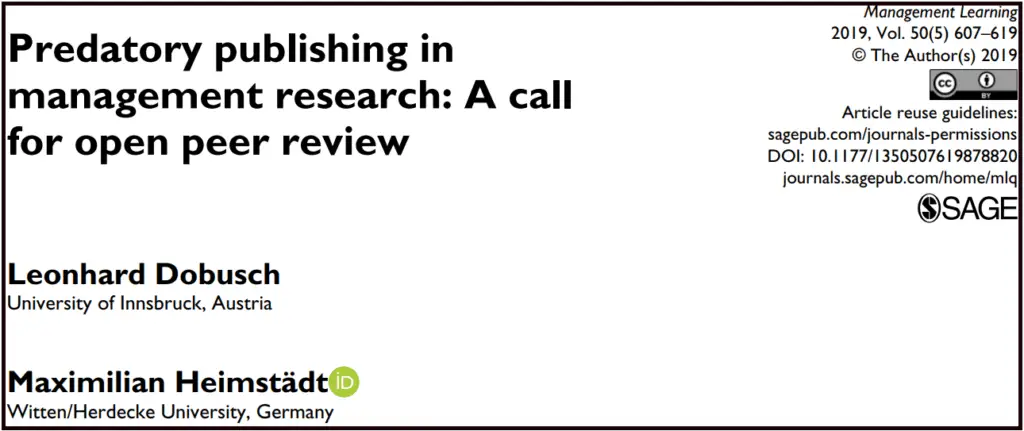Introduction to predatory publishing
If the term Predatory Publishing is new to you and you want a quick introduction, then this article might be just what you need.
We suggest three articles that you might want to take a look at, which will give you a good overview of this topic.
These three articles on predatory publishing are all open access
In this article we suggest that you read three articles. These articles are all open access. This means that they are free to download for anybody who wishes to access them. The other method, often referred to as traditional publishing, means that the articles sit behind a pay wall, so you would either need a subscription to access the article, or would need to pay a one-off fee.
The irony of suggesting you read open access articles
It is a little ironic that we are pointing you towards open access articles as it is the move towards open access publishing that was the catalyst for predatory publishers to enter the market. If it were not for open access, there would be no business model for the predatory publishers to exploit.
Can you get an appreciation of predatory publishing from just three articles?
Each of the three articles that we suggest you read was chosen for a different reason (more below) and we hope that they provide a good introduction to the topic of predatory publishing.
Being able to read just three articles, and get a good understanding of an area, is not possible in most disciplines, but we think it is possible with predatory publishing as it cuts across all disciplines (so is not embroiled in technical terms from a given discipline) and it is an area that we are all familiar with, that is publishing the results of our research.
What are the three articles on predatory publishing?
We provide more details about each paper, in case you want to just get on and read them, here are the three articles that we suggest you read. The links below each article will take you directly to the paper.
Go to article: 1087/20130203
Go to article: 5688/ajpe7810176
Go to article: 10.1177/1350507619878820
The full references to the three articles on predatory publishing
- Beall, J. (2013) Predatory publishing is just one of the consequences of gold open access, Learned Publishing, 26(2): pp 79-84. DOI: 1087/20130203
- Bowman, J.D. (2014) Predatory publishing, questionable peer review, and fraudulent conferences, American Journal of Pharmaceutical Education, 78(10): Article 176. DOI: 5688/ajpe7810176
- Dobusch. L. and Heimstädt, M. (2019) Predatory publishing in management research: A call for open peer review, Management Learning, 50(5): 607-619. DOI: 10.1177/1350507619878820
Why did we choose these three papers on predatory publishing?
Here we provide our reasoning as to why we suggested these three papers on predatory publishing as good starting points.
To be honest, there are many other papers that we could have chosen but these are the ones we went with. It was also important that they were open access so that anybody can read them.
1. Predatory publishing is just one of the consequences of gold open access
Link to article: DOI:10.1087/20130203
We chose this article as it was written by Jeffrey Beall. He is credited with coming up with the term predatory publishing and so it is useful to read something from him, as it is always good to read one of the seminal papers.
Beall gives a brief history of open access publishing, how this started predatory publishing and how he got involved in this new way of publishing scientific research.
He also discusses the early days of his blog and how it developed.
Beall is probably most famous for the list of predatory journals he maintained on his blog, which actually attracted quite a lot of controversy and criticism. His list of predatory journals became the “go to” place if you wanted to see if a journal was classified as predatory.
He eventually took his blog down due to the pressure his institution received. His blog is still available in an archived form, but it is no longer updated and, as a result it gets out of date as time passes.
Jeffrey Beall has written a number of papers on predatory publishing. If you look at his Google Scholar page (last accessed 14 Jun 2023), you will see that his most cited paper is a one page discussion on predatory publishing, which you may want to take a look at. You can access it here (it is also open access).
You might also be interested in reading about the first paper that Beall wrote on predatory publishing.
Another paper you might be interested in reading is the legacy that Beall has left.
2. Predatory publishing, questionable peer review, and fraudulent conferences
Link to article: DOI:10.5688/ajpe7810176
The reason we included this article is because it was the most cited article when we searched one of the leading bibliographic search engines (Scopus), searching for all the articles that has “Predatory Publishing” in the title of the article.
We reported these results on a Twitter post. Interestingly, when we downloaded the data from Scopus it did not return a DOI, which is why the graph we show on Twitter says that it was not provided. We later found the DOI, which is 10.5688/ajpe7810176.
Being the most cited paper (using the search term we mentioned above) suggests that people have found it useful, at least useful enough to cite the paper.
It should be recognised that older papers tend to be cited more. This is not surprising as they have been around for longer and so have had more opportunity to be cited. So, the fact that a paper has been cited more than any other paper, does not necessarily mean that it is the best paper, but it does indicate that other reserachers have accessed it.
The paper does a good job of relating the history of scientific publishing, with Nature first being published in 1869 and Science being published in 1880. According to the paper (actually they cite a paper in Science) a scientific paper is published every 20 seconds. Personally, we find that amazing.
One of the quotes we like from the paper is “Predatory publishing is the practice of publishing journals that exploit the emerging acceptance of open-access academic journals to undermine peer-review processes.” To us, this sums up what predatory publishing is, where it has come from, the change that it is exploiting and the dangers that it brings. If you want to know what predatory publishing is, you have it right there.
The paper also tells you how predatory publishers operate, which is mainly by cold calling researchers via emails asking them to submit papers and asking for payment. They may even promise that the researcher will become part of an editorial board.
It is also interesting to read about papers that had been generated by software, resulting in a non-sensical article, which was accepted by a journal and which forced the editor-in-chief to resign as a result.
Whilst not being about predatory publishing per se, the paper also relates the story of citations being manipulated, which were indexed by Google. It provides this as another example of the pressure that researchers are under, in this case to demonstrate that their published research is having impact.
The final part of the paper suggests that those at institutions who have responsibility for hiring and promotion need to be aware of these predatory practices. It also notes that the those with budgetary oversight also need to ensure that procedures and appropriate due diligence is in place to ensure that funds are being used in an appropriate way.
3. Predatory publishing in management research: A call for open peer review
Link to article: DOI: 10.1177/1350507619878820
We chose this article as it is one of the most recent that has been published (for this search we used Web of Science and searched for articles which included “Predatory Publishing” in the title).
We wrote the first draft of this blog post in November 2019 and the selected article was published in October 2019. We could have selected an article that was published slightly later, but it would not have been open access.
We thought it was useful to include a recent article so that you could read what is happening right now, rather than reading about what happened historically, which is the case with the previous two papers.
The opening of the paper states “Predatory journals have emerged as an unintended consequence of the Open Access paradigm.”
Given that this paper was published five years after the second paper we suggested above, it does appear that predatory publishing is still an issue that has yet to be resolved. Indeed, that is the reason for this web site, to have a go to place where this issue can be discussed and like minded people can come together to try and rid scientific publishing of predatory journals and publishers.
This article, which itself calls it a provocation piece, describes two ways that predatory journals are harming the management discipline.
They go onto suggest that a solution to predatory journals is the concept of open peer review. This relies on the idea that the peer review is made more transparent by making known who reviewed the paper, or at least their institution. It is assumed that predatory journals would not be willing to do this as they do not have robust peer review processes. It’s an interesting idea.
Summary
Trying to get up to speed on a new topic is always difficult. Predatory publishing has a couple of advantages.
The concept of predatory publishing is easy to understand. There is hardly any learning curve at all, at least to understand the basic issues that it raises.
The second factor that is that the literature base is not that large. We have highlighted three papers that you may want to read, but there are currently only about 100 papers with “Predatory Publishing” in the title of the articles.
If you open up the search and include the abstract and keywords (but still putting the term in quotes), there are still less than 200 papers. So, unlike, most other disciplines, the barrier to entry is quite low.
Article history
Where an article has been updated since first being written, we provide a history of the changes. Why? Why not :-).
- The original article was published on 1 January 2020.
- The article was updated on 14 June 2023. The main content was not changed but we reformatted it a little (as we now have more experience with the tools we use) and also to try and improve the flow.

